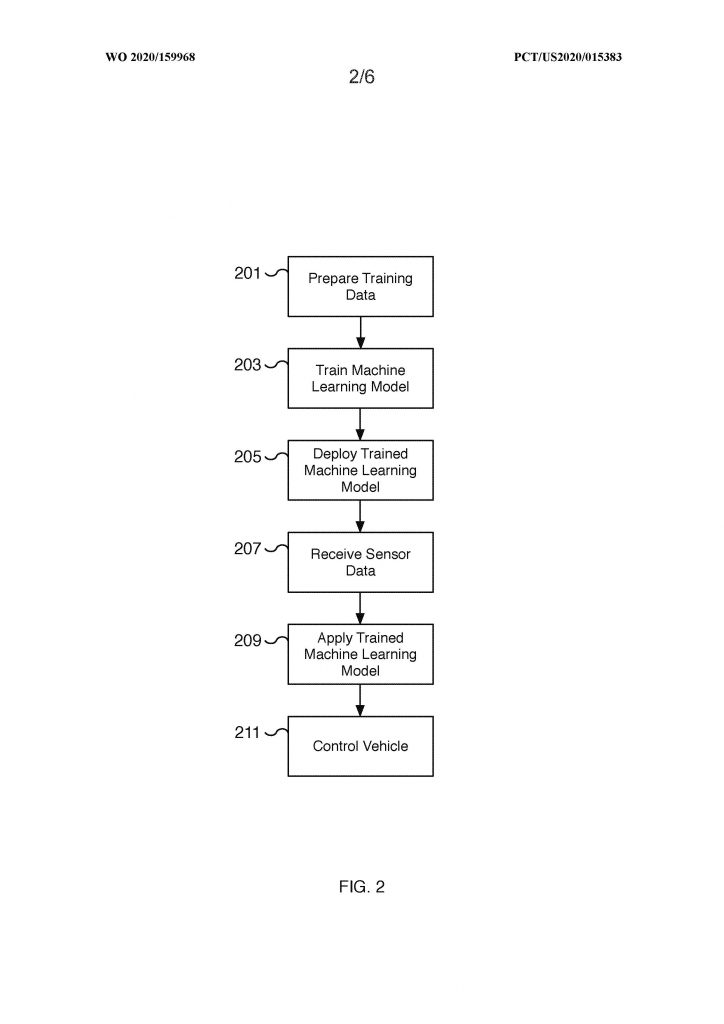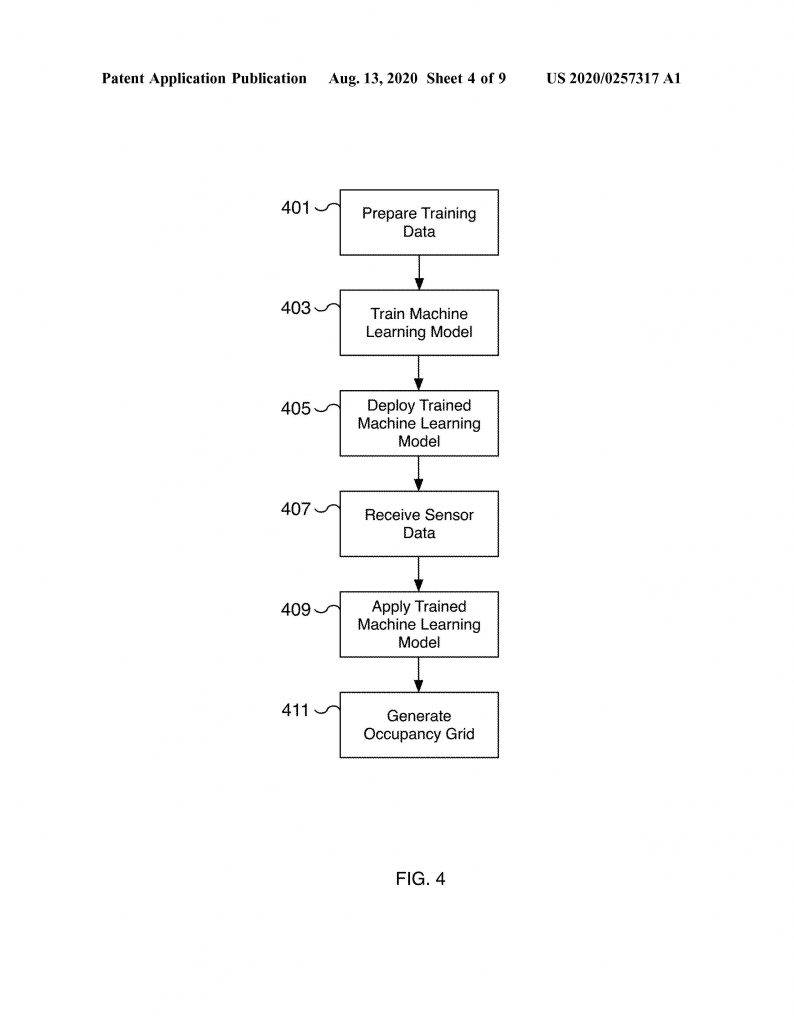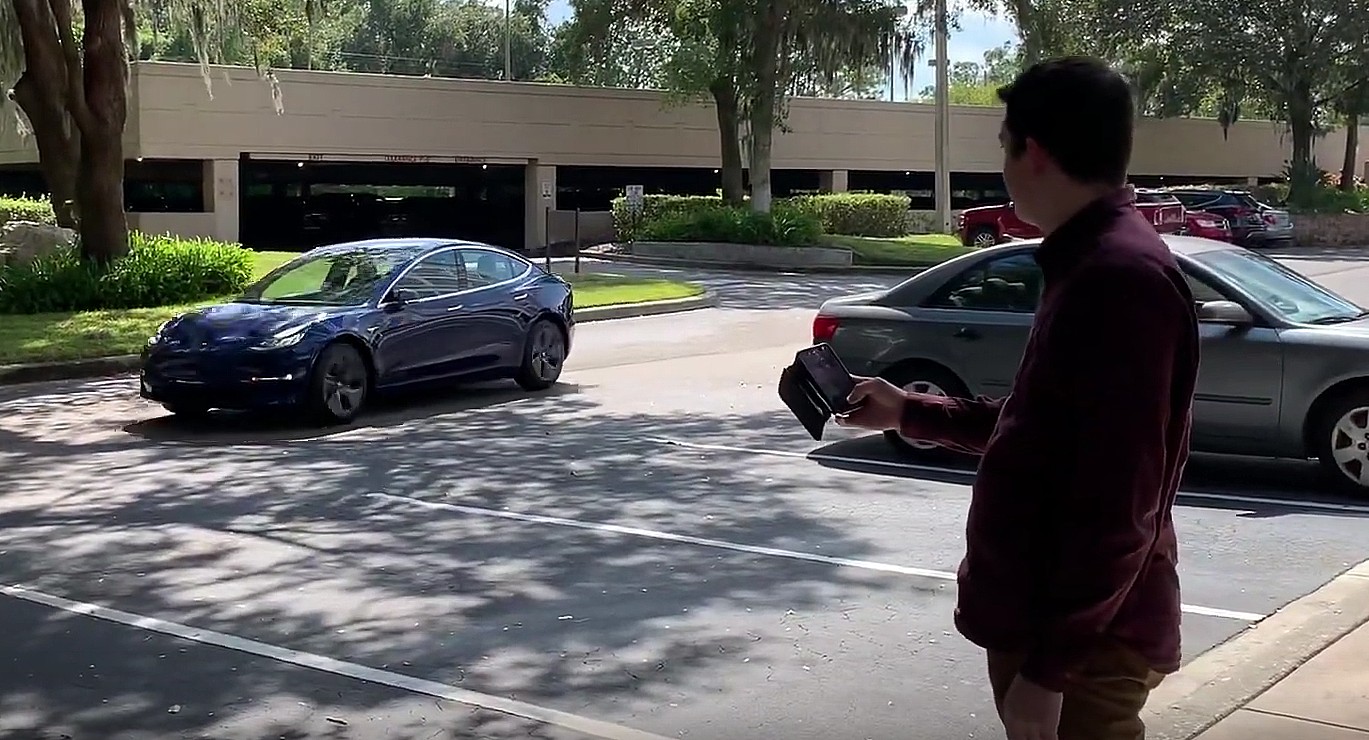
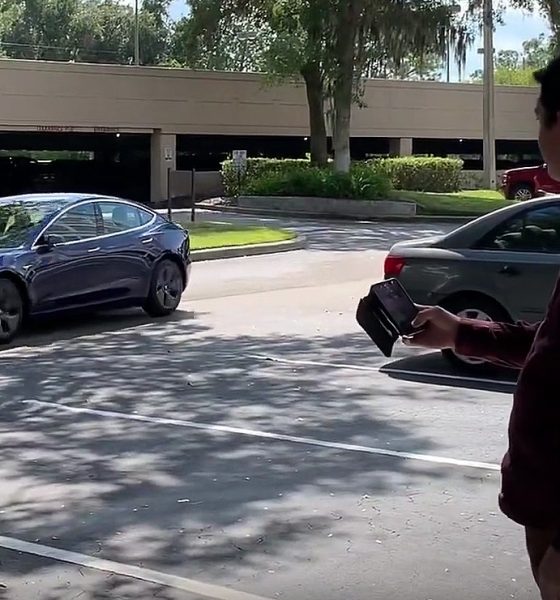
News
Tesla Smart Summon patent highlights progress in 3D labeling for full self-driving features
A recently published Tesla patent application details the machine learning methods behind Smart Summon, specifically highlighting the progress being made with 3D labeling in training data.
The application, titled “Autonomous and User Controlled Vehicle Summon to a Target,” utilizes machine learning methods explicitly detailed in two other recent Tesla patent publications in its functionality. This series of three inventions altogether describes an automated way of generating training data which is then used by a machine learning model to accomplish an expansive list of self-driving capabilities in Summon.
“Traditionally, much of the effort to curate a training data set is done manually by reviewing potential training data and properly labeling the features associated with the data,” Tesla’s first application in the series states. “The effort required to create a training set with accurate labels can be significant and is often tedious… Therefore, there exists a need to improve the process for generating training data with accurate labeled features.”
- A method flow chart from Tesla’s autonomous 3D labeling patent. | Image: Tesla/USPTO
- A method flow chart from Tesla’s Smart Summon patent application. | Image: Tesla/USPTO
The application goes on to describe how labeled training data is made autonomously in their invention using sensors and the collection of what’s called a “time series,” i.e., a series of images captured over a period of time.
“Using data captured by sensors on a vehicle to capture the environment of the vehicle and vehicle operating parameters, a training data set is created,” it explains. “In some embodiments, a three-dimensional representation of a feature, such as a lane line, is created from the group of time series elements that corresponds to the ground truth… As one example, a series of images for a time period, such as 30 seconds, is used to determine the actual path of a vehicle lane line over the time period the vehicle travels…a single image of the group and the actual path taken can be used as training data to predict the path of the vehicle.”
Tesla CEO Elon Musk has previously mentioned that better labeling is one of the keys to speeding up the rollout of self-driving functionality and features like Reverse Summon. “We need to finish work on Autopilot core foundation code & 3D labeling, then functionality will happen quickly. Not long now,” Musk wrote on Twitter in March this year. With better labeling (more accurate training data) comes safer and more capable software due to improved predictions from the modeling.
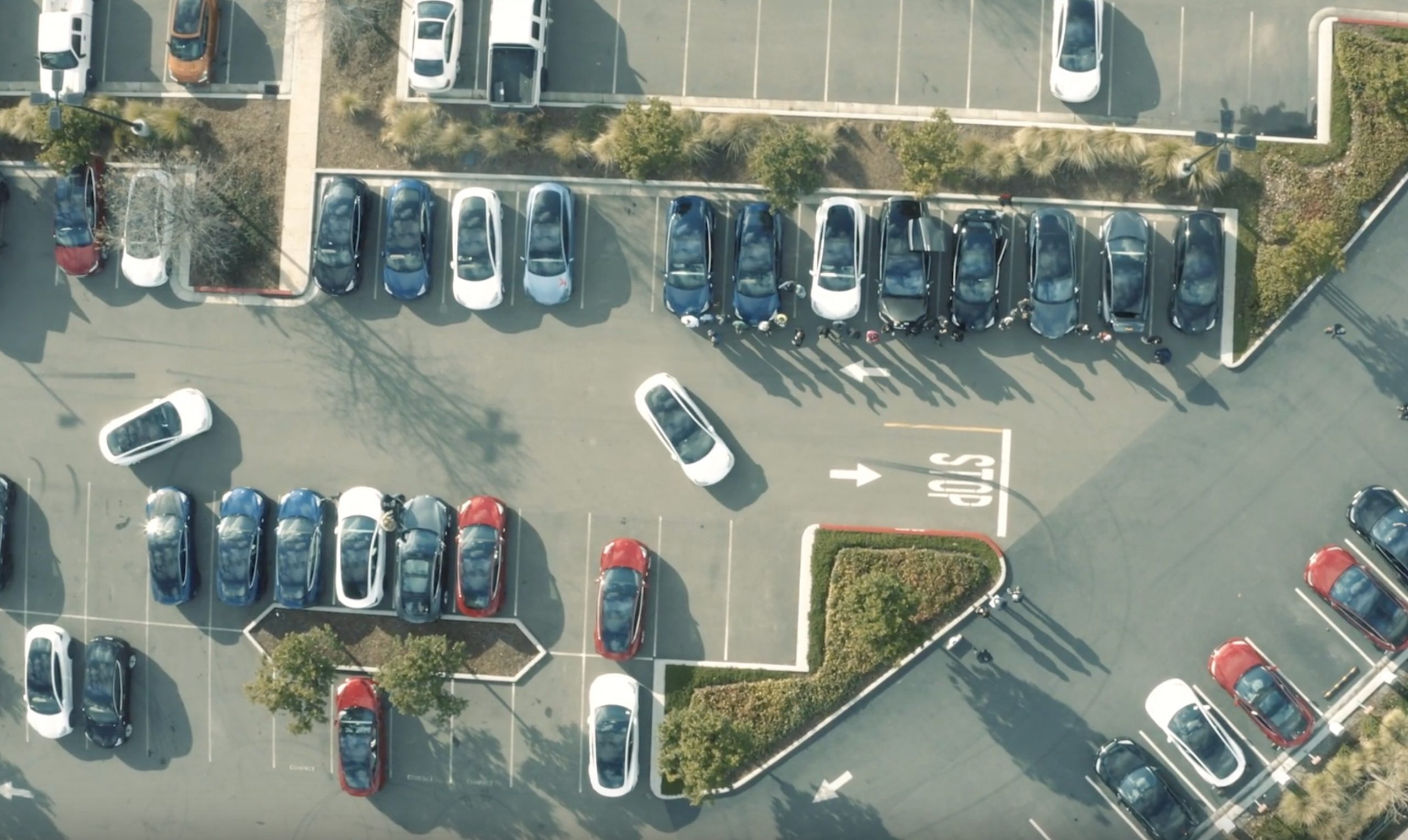
When it comes to Tesla’s Smart Summon, prediction modeling is essential considering there isn’t a driver in the vehicle during its operation. The patent publication covering Summon embodies the first application’s time series functionality and a second application’s implementation of the time series’ training data in its methods, demonstrating one of the numerous potential uses for the machine learning invention. Hints about future developments using Smart Summon are also detailed in the application. Examples include:
- Syncing the Smart Summon with a calendar so the vehicle “automatically navigates to arrive at the location at the ending time, such as the end of a dinner party, a wedding, a restaurant reservation, etc.”
- Implementing a multi-part destination into the Summon instructions such as waypoints at an airport to pick up multiple passengers.
- Monitoring the heartbeat of a Summon user to ensure they are maintaining a connection with the vehicle while operating the feature.
- Customizing the vehicle’s arrival settings such as interior lighting, exterior lighting, hazard lights, welcome music, and climate control preferences.
One of the more unique bits about the Smart Summon patent application is the appearance of Elon Musk as an inventor. While the CEO is known to be intimately involved in nearly all aspects of vehicle design, software features, and business operations, his name is unexpectedly absent from most of the company’s inventions. However, this is apparently on purpose. “I generally try my best not to be on patents,” he revealed on Twitter in reply to a post about the Smart Summon application. Notably, inventorship is a legal definition based on the conception of an invention, i.e., not the person/people who suggested or directed its creation, but the person/people who devised the means to accomplish it.
Prior to the most recent patent publication, Musk contributed inventorship to the door and body styling of the Model X. He also contributed the same to both the design and function of Tesla’s vehicle charge inlets.

News
Tesla starts showing how FSD will change lives in Europe
Local officials tested the system on narrow country roads and were impressed by FSD’s smooth, human-like driving, with some calling the service a game-changer for everyday life in areas that are far from urban centers.

Tesla has launched Europe’s first public shuttle service using Full Self-Driving (Supervised) in the rural Eifelkreis Bitburg-Prüm region of Germany, demonstrating how the technology can restore independence and mobility for people who struggle with limited transport options.
Local officials tested the system on narrow country roads and were impressed by FSD’s smooth, human-like driving, with some calling the service a game-changer for everyday life in areas that are far from urban centers.
Officials see real impact on rural residents
Arzfeld Mayor Johannes Kuhl and District Administrator Andreas Kruppert personally tested the Tesla shuttle service. This allowed them to see just how well FSD navigated winding lanes and rural roads confidently. Kruppert said, “Autonomous driving sounds like science fiction to many, but we simply see here that it works totally well in rural regions too.” Kuhl, for his part, also noted that FSD “feels like a very experienced driver.”
The pilot complements the area’s “Citizen Bus” program, which provides on-demand rides for elderly residents who can no longer drive themselves. Tesla Europe shared a video of a demonstration of the service, highlighting how FSD gives people their freedom back, even in places where public transport is not as prevalent.
What the Ministry for Economic Affairs and Transport says
Rhineland-Palatinate’s Minister Daniela Schmitt supported the project, praising the collaboration that made this “first of its kind in Europe” possible. As per the ministry, the rural rollout for the service shows FSD’s potential beyond major cities, and it delivers tangible benefits like grocery runs, doctor visits, and social connections for isolated residents.
“Reliable and flexible mobility is especially vital in rural areas. With the launch of a shuttle service using self-driving vehicles (FSD supervised) by Tesla in the Eifelkreis Bitburg-Prüm, an innovative pilot project is now getting underway that complements local community bus services. It is the first project of its kind in Europe.
“The result is a real gain for rural mobility: greater accessibility, more flexibility and tangible benefits for everyday life. A strong signal for innovation, cooperation and future-oriented mobility beyond urban centers,” the ministry wrote in a LinkedIn post.
News
Tesla China quietly posts Robotaxi-related job listing
Tesla China is currently seeking a Low Voltage Electrical Engineer to work on circuit board design for the company’s autonomous vehicles.

Tesla has posted a new job listing in Shanghai explicitly tied to its Robotaxi program, fueling speculation that the company is preparing to launch its dedicated autonomous ride-hailing service in China.
As noted in the listing, Tesla China is currently seeking a Low Voltage Electrical Engineer to work on circuit board design for the company’s autonomous vehicles.
Robotaxi-specific role
The listing, which was shared on social media platform X by industry watcher @tslaming, suggested that Tesla China is looking to fill the role urgently. The job listing itself specifically mentions that the person hired for the role will be working on the Low Voltage Hardware team, which would design the circuit boards that would serve as the nervous system of the Robotaxi.
Key tasks for the role, as indicated in the job listing, include collaboration with PCB layout, firmware, mechanical, program management, and validation teams, among other responsibilities. The role is based in Shanghai.
China Robotaxi launch
China represents a massive potential market for robotaxis, with its dense urban centers and supportive policies in select cities. Tesla has limited permission to roll out FSD in the country, though despite this, its vehicles have been hailed as among the best in the market when it comes to autonomous features. So far, at least, it appears that China supports Tesla’s FSD and Robotaxi rollout.
This was hinted at in November, when Tesla brought the Cybercab to the 8th China International Import Expo (CIIE) in Shanghai, marking the first time that the autonomous two-seater was brought to the Asia-Pacific region. The vehicle, despite not having a release date in China, received a significant amount of interest among the event’s attendees.
Elon Musk
Elon Musk and Tesla AI Director share insights after empty driver seat Robotaxi rides
The executives’ unoccupied tests hint at the rapid progress of Tesla’s unsupervised Robotaxi efforts.

Tesla CEO Elon Musk and AI Director Ashok Elluswamy celebrated Christmas Eve by sharing personal experiences with Robotaxi vehicles that had no safety monitor or occupant in the driver’s seat. Musk described the system’s “perfect driving” around Austin, while Elluswamy posted video from the back seat, calling it “an amazing experience.”
The executives’ unoccupied tests hint at the rapid progress of Tesla’s unsupervised Robotaxi efforts.
Elon and Ashok’s firsthand Robotaxi insights
Prior to Musk and the Tesla AI Director’s posts, sightings of unmanned Teslas navigating public roads were widely shared on social media. One such vehicle was spotted in Austin, Texas, which Elon Musk acknowleged by stating that “Testing is underway with no occupants in the car.”
Based on his Christmas Eve post, Musk seemed to have tested an unmanned Tesla himself. “A Tesla with no safety monitor in the car and me sitting in the passenger seat took me all around Austin on Sunday with perfect driving,” Musk wrote in his post.
Elluswamy responded with a 2-minute video showing himself in the rear of an unmanned Tesla. The video featured the vehicle’s empty front seats, as well as its smooth handling through real-world traffic. He captioned his video with the words, “It’s an amazing experience!”
Towards Unsupervised operations
During an xAI Hackathon earlier this month, Elon Musk mentioned that Tesla owed be removing Safety Monitors from its Robotaxis in Austin in just three weeks. “Unsupervised is pretty much solved at this point. So there will be Tesla Robotaxis operating in Austin with no one in them. Not even anyone in the passenger seat in about three weeks,” he said. Musk echoed similar estimates at the 2025 Annual Shareholder Meeting and the Q3 2025 earnings call.
Considering the insights that were posted Musk and Elluswamy, it does appear that Tesla is working hard towards operating its Robotaxis with no safety monitors. This is quite impressive considering that the service was launched just earlier this year.
